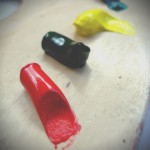Kinds Of Volcanoes For Kids
What can be the kinds of volcanoes for kids? A volcano is a land formation that spews out hot magma from the center of the Earth. On the surface, a volcano resembles a mountain, but has a wide opening or crate in the center, which provides a path for release of lava, ashes and hot gases.
Geologists have come up with four kinds of volcanoes: the composite volcanoes, the shield volcanoes, cinder cones and lava domes. This article will give you a little bit of insight on these different types, and what makes them unique in their own ways.
– Composite Volcanoes – Composite volcanoes are also known as strato-volcanoes. Its name is derived from its structure, which is made up of several hardened layers of volcanic ash, cooled lava and great blocks of stone. These kinds of volcanoes often have steep, symmetrical slopes, and are aesthetically pleasing to the eye from a far, despite the damage that they can potentially cause. Some of the world’s most beautiful volcanoes, such as Mt. Fuji in Japan and Mt. Saint Helens in Washington, United States are composite volcanoes.
– Cinder Cone Volcanoes – Cinder (or scoria) cones are volcanoes that occur in nature more commonly than other kinds of volcanoes. They are also perhaps the smallest types, rising to a meager three hundred and sixty meters, compared to the majestic heights of composite volcanoes, which can rise up to more than two thousand meters.
– Shield volcanoes – Shield volcanoes are volcanoes rising from thin layers of lava that flow into all directions from a central vent. Unlike other kinds of volcanoes, the shield volcano does not ‘explode’ and is not prone to erupting with much force; rather, the magma rises slowly until it starts to spill over the edges of the volcano’s crater.
– Lava domes – Volcanic domes are the result of thick masses of lava that do not spread or flow throughout a great distance due to its gooey, viscous consistency. Towards the end of an eruption, lava domes are prone to manifest within a strato-volcano’s crater.
When living near a volcano, one cannot truly prevent or stop the eruption of this land formation, but there are telltale signs that could help inhabitants move to much safer and more distant areas prior to an eruption.
Geologists and experts who study the ‘life’ and eruption patterns of a volcano can somewhat predict when a volcano is bound to explode. Once you get wind of such warnings and you happen to be very near the vicinity of a volcano, it is advisable to pack all your valuables, assemble an emergency supply kit and leave the area immediately. You may proceed to areas considered safe, or track down evacuation centers set up specifically in anticipation of this kind of occurrence. When you find yourself caught in ash fall, try to get indoors as soon as you can. Being exposed to ash from any kind of volcano may lead to illnesses, so it is best to anticipate this by wearing clothing that covers the skin and by investing in masks.






